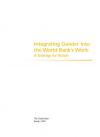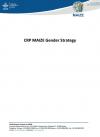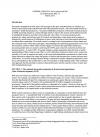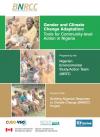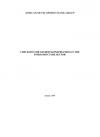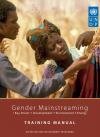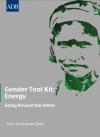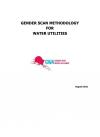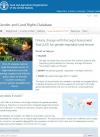Resources
08 Feb 2017
European Commission, 2015: Guidelines to help science organizations develop and implement policies to promote women’s participation in science, including collecting data and monitoring gender equality, engaging leaderships, policy-making and institutionalisation, etworking and empowering women to take action, integrating gender in education and research, and communications.
12 Oct 2016
World Bank, 2002: Strategy identifies gender-related barriers to poverty reduction and sustainable development; and recommends appropriate actions to reduce these barriers; it is intended to establish an enabling environment
to foster country-led, country-specific strategies for changing the gender patterns that are costly to growth, poverty reduction, and human well-being.
12 Oct 2016
European Institute for Gender Equality (EIGE), 2016: Toolkit provides guidance for government and other institutions to assess whether their policies, programmes, action plans and projects reduce, maintain or increase the gender inequalities between women and men.
12 Oct 2016
CGIAR: Strategyoutlines the process and approach that the MAIZE program has adopted in order to contribute to and promote gender equality and equity in agricultural research for development (R4D) related to maize-based systems.
12 Oct 2016
CGIAR, 2013: Gender strategy lays out approaches to improve how women are included in livestock agriculture and aquaculture, and to improve the equity of the social and institutional environments in which value chains function to enhance the range and quality of choices and outcomes poor women and men have within them.
06 Oct 2016
African Development Bank, 2009: Checklist is intended to guide WASH project managers and implementation teams in identifying, preparing, appraising, implementing, monitoring and evaluating gender-sensitive drinking water supply & sanitation programs and projects, and support national governments in
analyzing and implementing programs and projects.
REGIONS: Sub-Saharan Africa
23 Sep 2016
Nigerian Environmental Study/Action Team (NEST), 2011: Toolkit provides resources on the basic concepts of gender mainstreaming, analysis and
planning; Increases awareness and reduces the gender bias that informs individual attitudes towards gender equity work; and provides basic knowledge and tools to effectively mainstream gender equity.
REGIONS: Sub-Saharan Africa
23 Sep 2016
African Development Bank, 2009: Checklist provides a tool for effective mainstreaming of gender in infrastructure programs and projects to guide task managers and implementation teams to plan, design, implement, monitor and evaluate gender-sensitive and responsive infrastructure projects.
REGIONS: Sub-Saharan Africa
22 Sep 2016
UNDP, 2007: Manual examines environment and energy development projects, policies and decision-making processes from a gender perspective. Written for UNDP staff working with national counterparts in governments and NGOs, it can also be used by other development practitioners working in the field of environment and energy.
21 Sep 2016
Asian Development Bank, 2012: Toolkit provides users with a set of tools to design energy projects that are gender responsive, including key questions to be asked
during gender analysis, examples of gender-inclusive design features and gender indicators, and a number of case studies of recent ADB-financed projects.
21 Sep 2016
Gender and Water Alliance, 2011: A participatory gender scan methodology guides utility staff to determine the level of gender mainstreaming inside and outside of their
utilities by using objective data and staff perceptions of the achievement of gender equality. It should be used as a tool for achieving long-term overarching targets and
goals for improving gender mainstreaming.
TYPE: Monitoring & Assessment
20 Sep 2016
FAO: This tool offers a scroll-down list of legal indicators for gender-equitable land tenure. The indicators focus on the elimination of gender-based discrimination in the constitution, in inheritance, nationality, property rights and access to justice among others.
TYPE: Monitoring & Assessment, Data
11 Aug 2016
Fact sheet provides an analysis of how women are affected by climate change and how they respond, together with references to relevant United Nations mandates and information sources.
TYPE: Monitoring & Assessment





